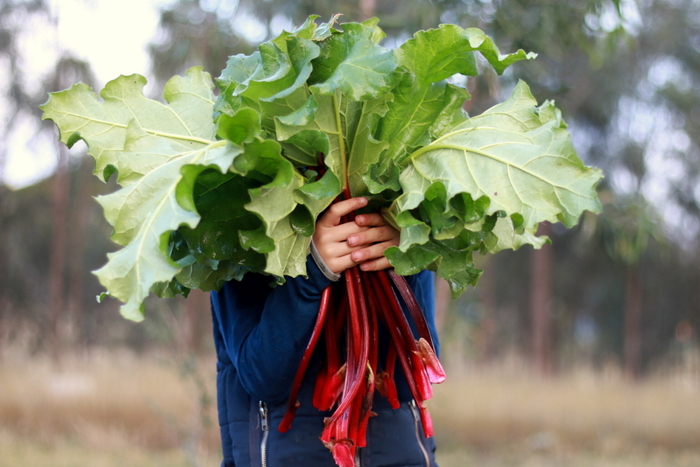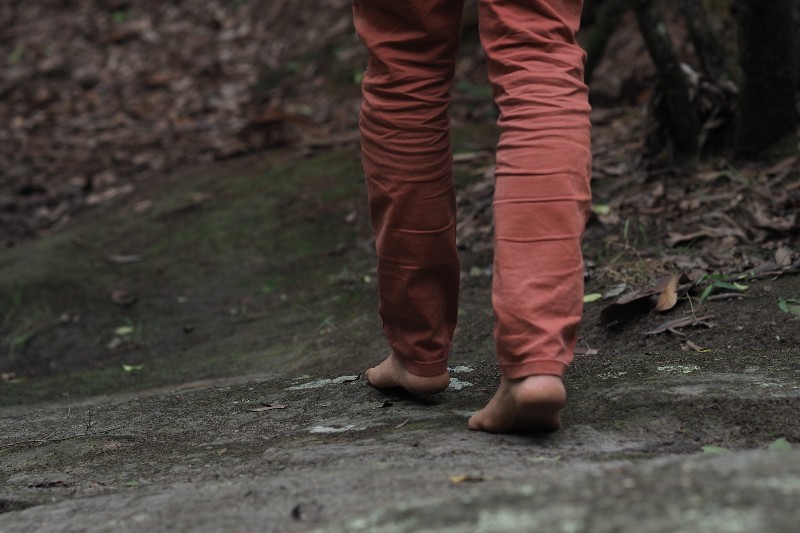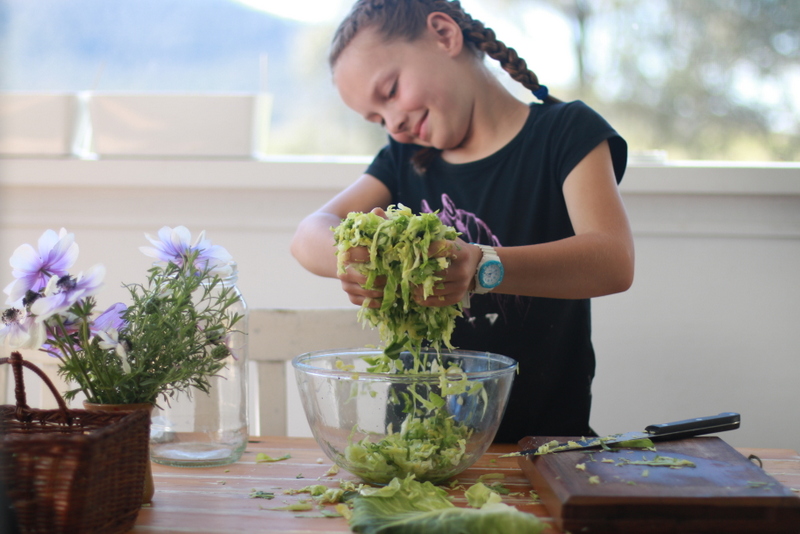Rhubarb is one worthwhile garden plant. It’s beautiful, hardy, low-maintenance and delicious. I especially love that you plant it once and, if you care for your patch properly, you can be harvesting rhubarb indefinitely.
Right now – late winter and into early spring – is a good time to plant rhubarb.
It’s typically planted as crowns. You can raid a friend’s garden and divide crowns from an existing plant, or you can buy crowns or potted plants from a nursery.
Winter red varieties of Australian rhubarb
Much of the literature regarding growing rhubarb talks about it going dormant in winter. But not all varieties do this.
Numerous beautiful red winter rhubarb varieties were developed in Australia in the early 1900s.
These rhubarbs not only survive year round, they are actually at their best in winter – a time perfectly suited to warm stewed or baked rhubarb.
I suspect I’m growing Sydney Crimson – a winter rhubarb variety that was very popular with market gardeners in the 1940s and 50s.
It’s been in my family for more than 60 years. I call it Gran’s Red. Gran called it Sydney Red. She was very proud of her super red rhubarb. I’ve maintained a pot or patch of this rhubarb for the past 20 years and so have many of my relatives.
Other year-round varieties of rhubarb available in Australia include Wandin Red, Ever Red and Next Generation.
How to plant Rhubarb
Choose a sunny to partially shaded spot for your rhubarb. It can tolerate a little shade and appreciates afternoon shade in summer.
Rhubarb thrives best in rich soil with good drainage. Improve your soil with plenty of aged manure or compost.
Plant the crowns at least 50 centimetres apart. The growing surface of crowns should sit at or just below the surface. Water well and mulch.
How to harvest rhubarb
Give your plants plenty of time to establish and don’t harvest any stems for the first year or so after planting.
When harvesting rhubarb, hold the stalk near the base and gently pull it away from the crown. This ensures the whole stem comes away and doesn’t leave a stump, which can cause rot.
Harvest the thickest stems and always leave behind plenty of stems or you will exhaust the plant.
I have enough plants so that I only harvest a couple of stems from each plant each time.
Remove the leaves from the stalks.
The leaves are high in oxalic acid and shouldn’t be eaten or fed to poultry or other stock. They can be composted safely. I keep a compost bin next to my rhubarb patch so that I can easily toss leaves straight into the compost.
How to keep your rhubarb patch happy
To keep your rhubarb happy, top-dress it with well-rotted manure or compost before and after its peak growing season. For me, this is spring and autumn.
Regular liquid fertiliser is also a good idea.
It is almost impossible to overfeed rhubarb.
Don’t let rhubarb dry out, especially in summer. Keep your patch well watered and mulch generously. It is best to thoroughly water infrequently rather than give them a little frequently.
Adding plenty of high-nitrogen organic matter should discourage flowering. But if flowers do appear, remove them and increase feeding and watering, otherwise your plants will put energy into flowers rather than stems.
Healthy, large rhubarb plants can be dug up and divided for replanting. Use a spade and dig the whole clump from the soil. Shake off excess dirt and divide into large pieces using a sharp spade or knife. Ensure each piece has at least three growing points and good roots.
My favourite way to enjoy rhubarb is simply stewed with orange juice and a little honey. What’s yours?
Originally published in the Newcastle Herald Monday 17th July 2015.



